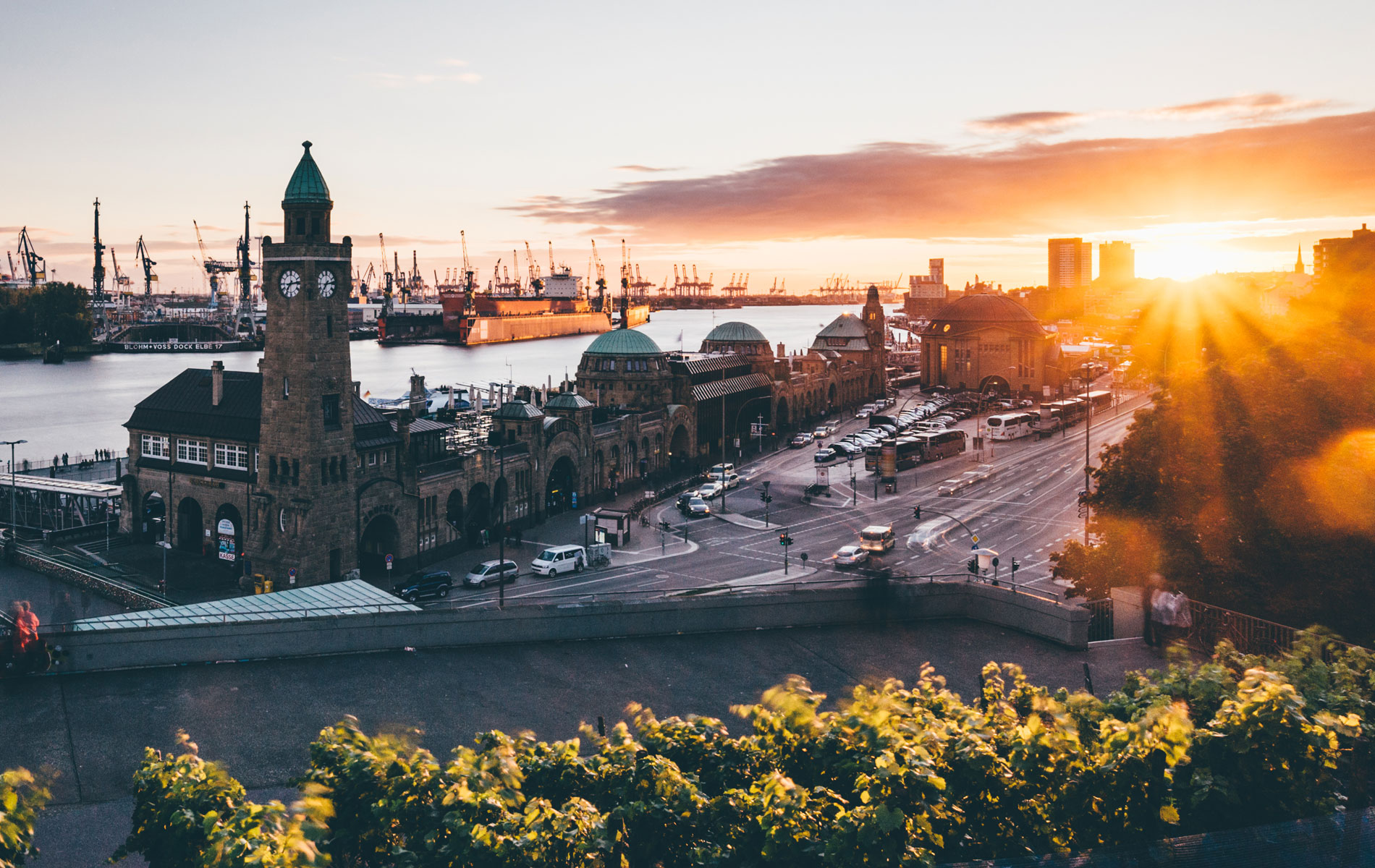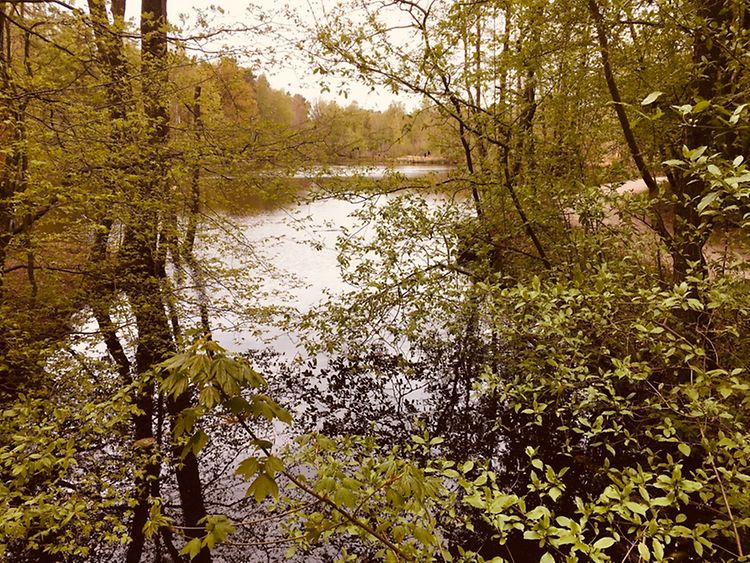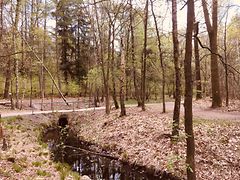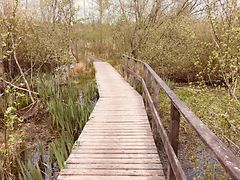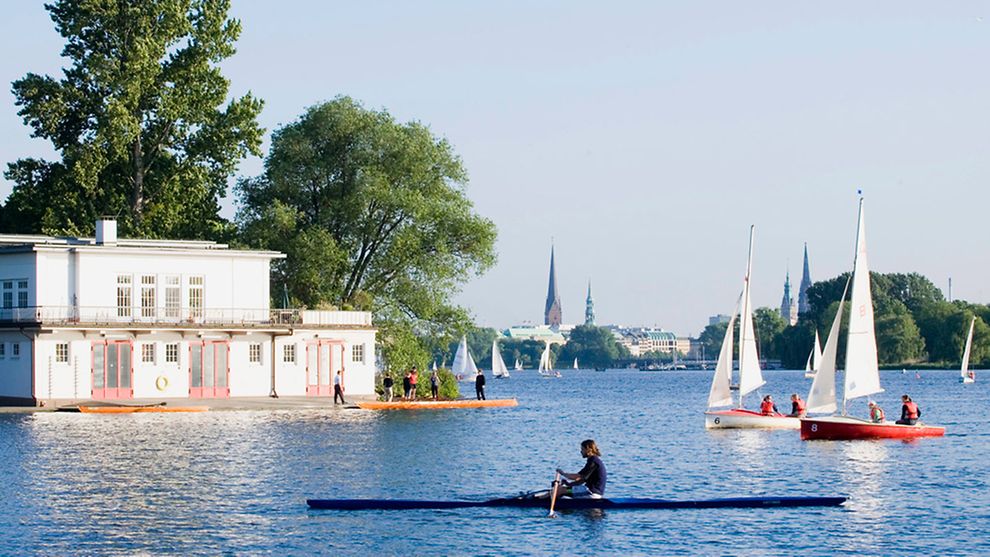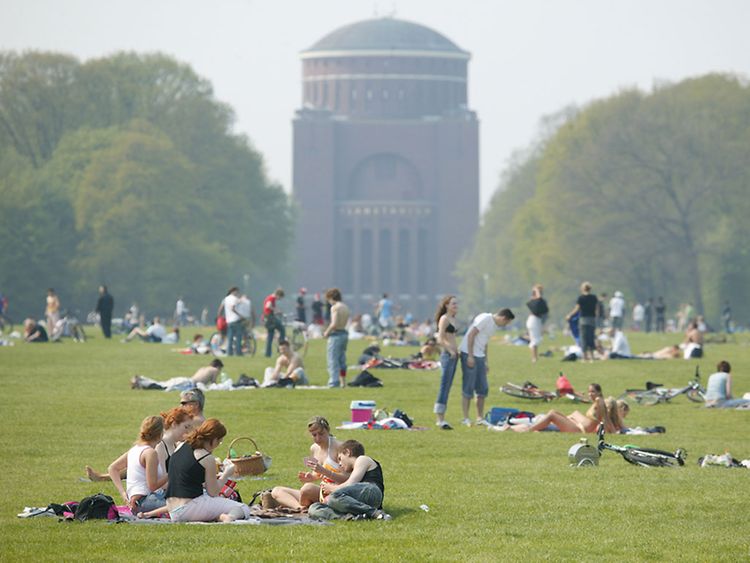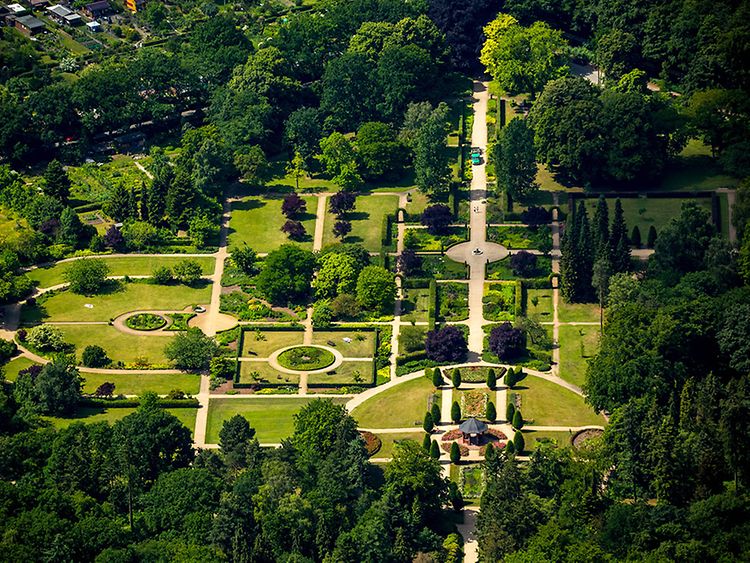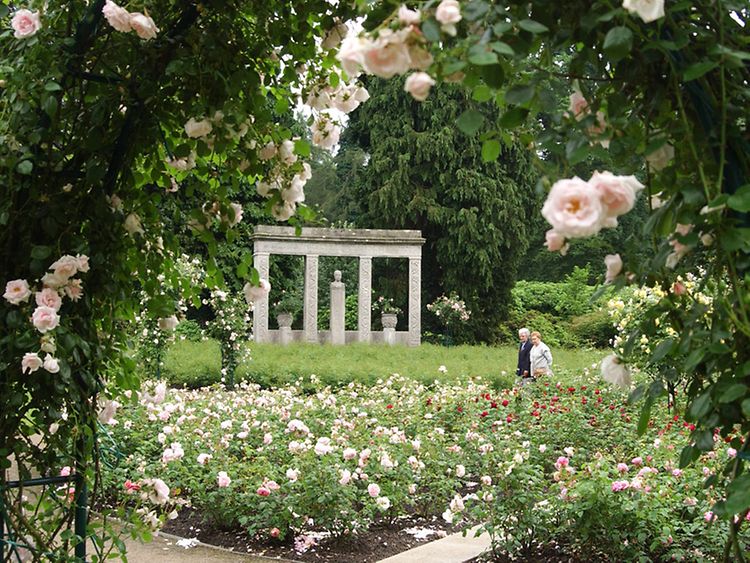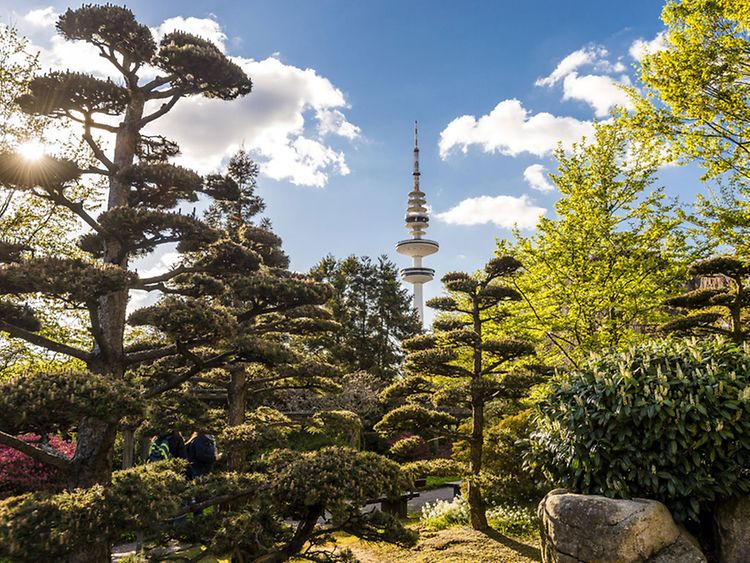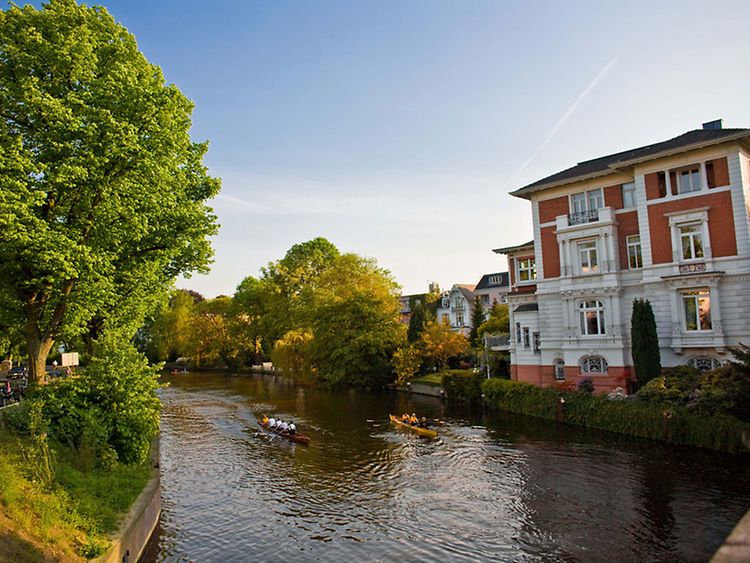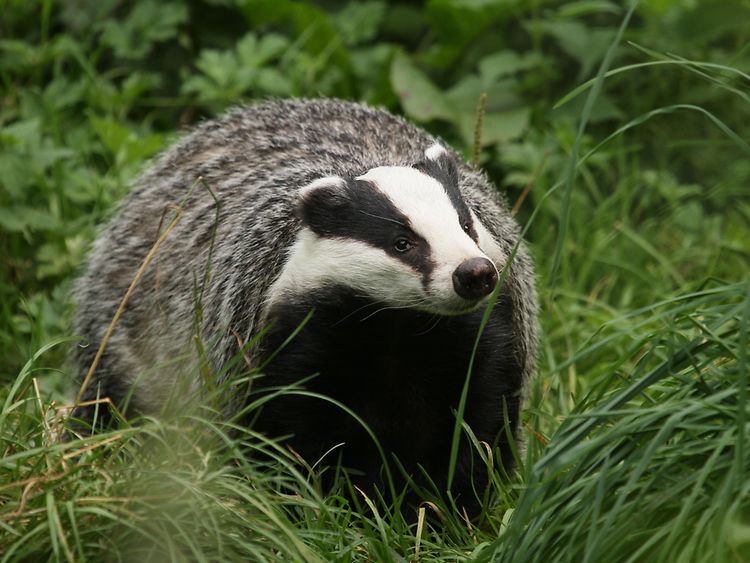Every neighbourhood has its beautiful green areas, but nature becomes more pristine the farther you head into Hamburg’s more rural parts.
Important note: Please always remember to respect nature by staying on designated paths and keeping dogs on leashes when hiking through nature reserves. As the saying goes, take nothing but pictures, leave nothing but footprints.
In the middle of the city
If you want to escape the hustle and bustle of the city while staying relatively close to its centre, there are always the usual suspects like the Stadtpark, Planten un Blomen or the Volkspark.
Places like Eppendorfer Moor, however, are lesser known - despite being the largest bog in any Central European city. And unbeknownst to most people in Hamburg, this conservation area has more to offer than meets the eye. In and around the small ponds, the attentive visitor will find an impressive number of rare plants and animals. Nearly 600 species of butterfly and 20 different species of dragonfly can be found here.
The conflux of the Osterbek and Seebek brooks in the neighbourhood of Dulsberg is a sight for city-sore eyes. If you’re lucky, you may spot a kingfisher. A conservation area was created for these beautiful birds by Alter Teichweg station - perfect living conditions for protecting Hamburg’s wild population. You may also encounter the colourful birds along the Alster and Wandse rivers.
On the fringes of the city
The last ice age 20,000 years ago shaped the landscape of Hamburg. This ancient history is still particularly visible in the northeast of the city. Glaciers once reached well into the neighbourhood of Rahlstedt, leaving unique landscapes in the conservation areas of Höltigbaum and Stellmoorer Tunneltal. Cormorans, salamanders, wild boar and woodpeckers can be spotted here and the variety of plants is unparalleled across Hamburg.
The Boberger Niederung nature reserve is another remnant of the last ice age and home to many rare animals as well as Hamburg’s last shifting dune. A bathing lake in summer and a sledge run in winter make this trip to the southeast of Hamburg worthwhile all year round.
If you wish to see wild boar and cranes in real life, Duvensteder Brook is your best bet. It only takes a little luck and patience to see these impressive animals in Hamburg’s third-largest nature reserve. Bring your binoculars and use the special wildlife observation screens by the wayside. But remember: respect wildlife and keep your distance!
In the Kirchwerder Wiesen area farther south, a beautiful display of colours can be observed. More than 200 varieties of plants bloom in these meadows. They blossom at different times, which causes the area to change colour completely in a matter of days. Two pathways and many information boards let you learn about the beautiful area.
From March to July, Kirchwerder also offers great opportunities for stork watching. Take a hike or bike ride and spot their impressive nests high above your head. Did you know that these large migratory birds almost always return to their nests?
The Heuckenlock conservation area in the southeastern corner of Wilhelmsburg also deserves a visit. The almost primeval forest is framed by the north and south arm of the Elbe river. Tides flood the area regularly, which accounts for several different vegetation zones and a rich wildlife. Even white-tailed eagles nest here.
The fact that nature eventually takes back what was once hers is evident in the former landfills of Georgswerder and Hummelsbüttel. The Energieberg (lit. ‘energy mountain’) in Georgswerder in the northeast of Wilhelmsburg was covered with trees and undergrowth and is now home to various species of birds. In Hummelsbüttel, trips into nature come with a great view of the city. Only a short walk from there, the Raakmoor nature reserve offers quiet hikes through the woods and boglands. Here too, nature has reclaimed what used to be cultivated farmland.
Just outside of Hamburg
Nature and history lovers should head east into Sachsenwald forest. Not only are the dense woods that border Schleswig-Holstein and Hamburg one of the largest green areas in the entire region but they also boast some historical significance: Chancellor Otto von Bismarck spent the last years of his life here. The forest and Friedrichsruh castle were given to him by Emperor William I in 1871. It is here where the influential politician, familiar to Hamburg experts as the subject of the large statue towering over St. Pauli district, was buried in 1898. Yet Sachsenwald has more of offer than just heavyweights of German history: creatures light as a feather and of incredible natural beauty can be found at the Friedrichsruh butterfly garden.
Finally, a somewhat strange scene can be observed in the city of Geesthacht between May and June. Just outside Hamburg, you can watch the march of the mitten crabs. Countless numbers of these animals move upstream each year to lay their eggs. If you combine this with a stroll through the local environs, you may even get lucky enough to see a beaver swimming the Elbe river.
